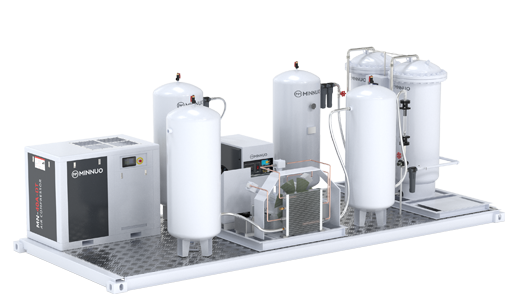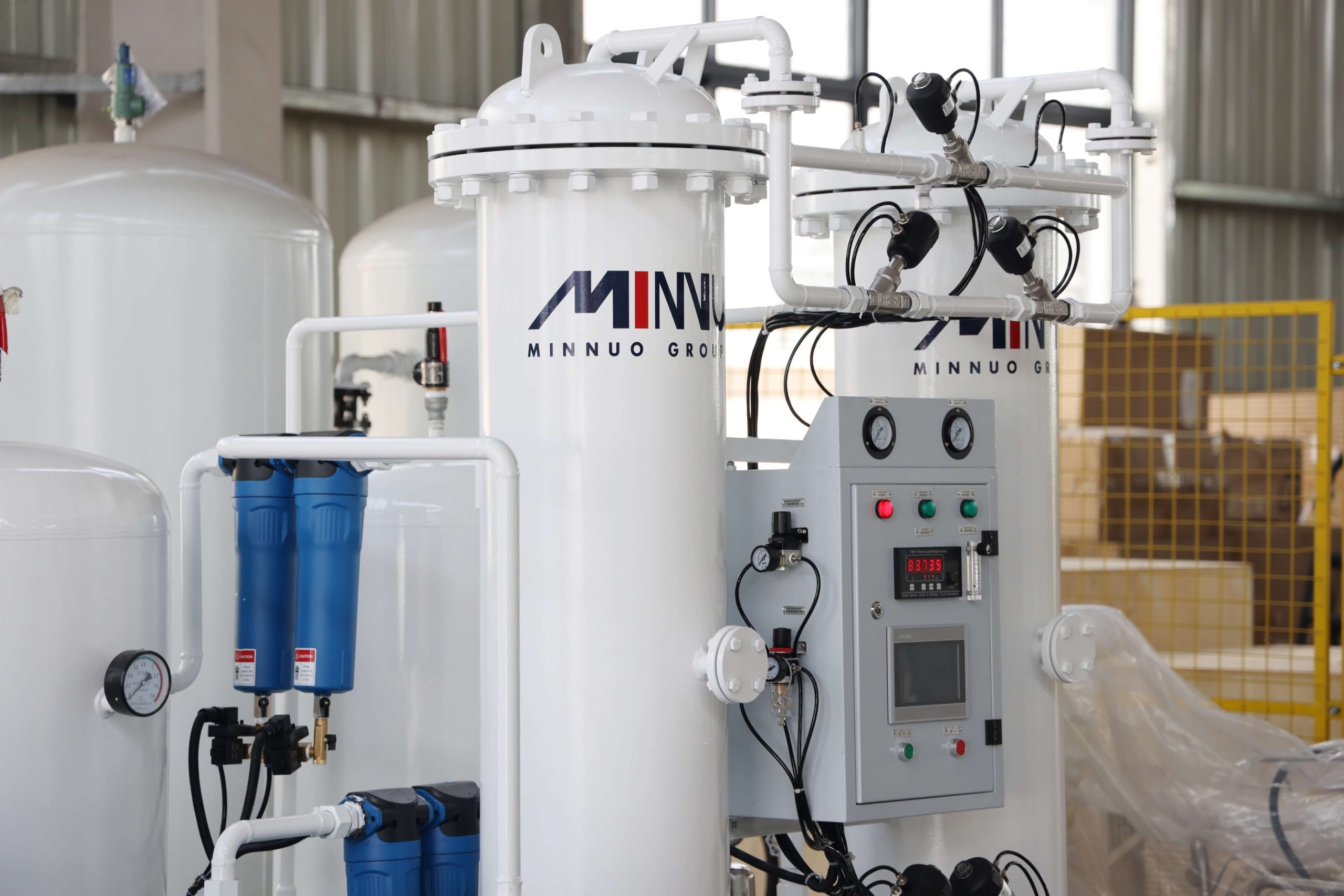Why On-Site Nitrogen is the Future
In a landscape where supply chain reliability, operational cost control, and purity levels are paramount, relying on traditional nitrogen cylinders or bulk liquid tanks is becoming a practice of the past. Modern industries—from food packaging and petrochemicals to advanced analytical laboratories (LC-MS, GC)—are increasingly turning to PSA Nitrogen Generators for a reliable, continuous, and cost-effective gas supply.
A Pressure Swing Adsorption (PSA) system allows you to generate nitrogen on-demand from the ambient air, offering significant savings, often exceeding 50% to 300% over outsourced supplies. But how exactly does this powerful piece of technology produce nitrogen gas with purities reaching up to 99.9995%?. This 2026 guide breaks down the core principle, the mechanical cycle, and the essential components of a PSA Nitrogen Generator.
The Core Principle: Selective Adsorption and Carbon Molecular Sieve (CMS)
The foundation of the PSA nitrogen generator is a simple yet brilliant physical process called adsorption, using a specialized material called Carbon Molecular Sieve (CMS).
- Adsorption vs. Absorption: It’s critical to understand that PSA involves adsorption, where gas molecules adhere to the surface of a solid, not absorption, where they are dissolved or integrated into a liquid or solid.
- The Role of CMS: Compressed air is approximately 78% Nitrogen (N₂), 21% Oxygen (O₂), and 1% other gases (like Argon, CO₂, and water vapor). CMS material is designed with specialized pores. When compressed air is introduced, the smaller molecules—specifically Oxygen, Carbon Dioxide, and moisture—are preferentially trapped or “adsorbed” into the pores of the sieve.
- Nitrogen Production: Since Nitrogen molecules are slightly larger than Oxygen molecules, they are unable to fit into the CMS pores and are instead allowed to bypass the sieve, resulting in a highly pure stream of nitrogen gas that exits the vessel.
The Pressure Swing Cycle: The Two-Tower System
PSA technology operates on a continuous “swing” of pressure to ensure uninterrupted nitrogen production. This is typically achieved using a Twin Tower PSA system consisting of two identical vessels (or towers) filled with CMS. The vessels constantly alternate between a high-pressure Adsorption phase (production) and a low-pressure Regeneration phase (cleaning).
The Five Key Process Steps:
| Step | Description | Purpose |
| 1. Feed Air Conditioning | Ambient air is compressed, then passed through an air dryer and multi-stage filters (including coalescing and carbon filters if using an oil-lubricated compressor) to remove oil, moisture, and impurities. The compressed air must be clean and dry to protect the CMS. | Ensures high N₂ purity and prevents damage to the CMS. |
| 2. Pressurization & Adsorption | The conditioned air enters Tower A under high pressure (typically 4 to 13 bar). Oxygen, CO₂, and water are adsorbed by the CMS, while high-purity nitrogen passes through and is collected. | Produces the desired purity nitrogen gas. |
| 3. Depressurization & Regeneration | Once the CMS in Tower A is nearly saturated, the process switches to Tower B for adsorption. Simultaneously, Tower A begins regeneration. The pressure in Tower A is rapidly reduced (venting) to a pressure lower than the adsorption step, which causes the trapped contaminants (Oxygen, etc.) to detach and release from the CMS. | Cleans and reactivates the CMS for the next cycle. |
| 4. Purge/Pressure Equalization | During regeneration, a small portion of the high-purity nitrogen product from the active tower (Tower B) is back-flown into the regenerating tower (Tower A). This purge flow ensures all released contaminants are pushed out through the exhaust. The pressure then equalizes between the two towers before they switch roles. | Optimizes regeneration and ensures maximum efficiency. |
| 5. Nitrogen Receiver & Product Delivery | The continuous flow of nitrogen generated from the alternating towers is collected in a Nitrogen Buffer Tank (receiver). This vessel stabilizes the pressure and flow rate, ensuring a constant stream of high-purity nitrogen to the application. | Provides a stable, reliable output flow. |
Key Advantages and Efficiency Metrics (2026 Outlook)
As technology progresses, PSA remains the preferred method for applications demanding extremely high purity, often reaching up to 99.9995%.
- Cost Efficiency: The primary driver for PSA adoption is the substantial cost reduction compared to bulk liquid or cylinder gas. By generating on-site, companies eliminate delivery costs, evaporation loss, monthly rental fees, and reduce handling safety risks.
- Reliability: PSA generators are designed for continuous, unattended, 24/7 operation and boast long service lives, often lasting a decade or more with proper maintenance.
- Purity Capabilities: PSA systems are inherently better suited for achieving ultra-high nitrogen purity levels (up to 99.999%) than Membrane technology, which is typically more efficient between 95% and 99%.
- Efficiency Metric (Air Factor): When assessing a PSA generator, engineers focus on the Air Factor—the amount of compressed air required to obtain a specific nitrogen flow. A lower Air Factor signifies higher generator efficiency and therefore lower overall energy running costs.
Conclusion: Reliability, Purity, and Control
The PSA Nitrogen Generator is a mature, reliable, and cost-effective solution for on-site nitrogen production. The ingenious system of pressurized selective adsorption using Carbon Molecular Sieve and the continuous “pressure swing” cycle ensures a stable, high-purity nitrogen supply on demand. For any company prioritizing purity (up to 99.9995%) and seeking to take full control of their gas supply chain in 2026, Pressure Swing Adsorption technology represents the superior investment.






 sales2:+86 17506119168
sales2:+86 17506119168

